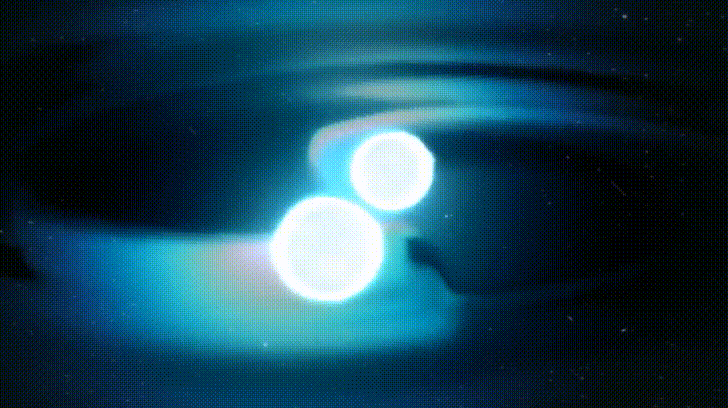The kilonova from a neutron star collision formed a surprisingly perfect spherical explosion, baffling scientists.

In 2017, astronomers witnessed the first-ever recorded collision of two neutron stars, named GW170817. This event provided groundbreaking insights into neutron star collisions and their aftermaths. However, recent analysis of the explosion, known as a kilonova, has revealed an unexpected and puzzling discovery: the explosion was a near-perfect sphere. This finding has surprised scientists, challenging long-standing theories about such collisions.
A Spherical Mystery
Astrophysicists expected the kilonova explosion to be asymmetrical, based on models developed over the past 25 years. These models predicted a flattened, irregular shape due to the nature of the collision, where two super-dense stars orbit each other hundreds of times per second before merging. Instead, what the researchers found was a completely spherical explosion. This revelation has left experts questioning their previous understanding of neutron star collisions.
Darach Watson, an astrophysicist at the Niels Bohr Institute, expressed his astonishment at the findings. “It makes no sense that it is spherical, like a ball,” he remarked. According to the researchers, this means there are gaps in the current theories and simulations of kilonovae, suggesting that unknown physics might be at play.
Uncovering Possible Explanations
The spherical shape hints at a new layer of energy involved in these collisions. One possible explanation revolves around the idea of a hypermassive neutron star that forms briefly before collapsing into a black hole. This extremely powerful neutron star, supported by an immense magnetic field, may cause a “magnetic bomb” effect when it collapses. This massive energy release could explain why the kilonova appears spherical, smoothing out any asymmetry that would typically occur in such explosions.
There’s also the question of how heavy elements, such as gold and uranium, form in these collisions. Sneppen’s team detected strontium, a relatively lighter element, distributed symmetrically across the explosion. However, heavier elements were expected to form in different regions of the kilonova. This has led to speculation that neutrinos, elementary particles emitted during the event, might play a critical role in influencing how these elements are forged. These neutrinos could be converting neutrons into protons and electrons, creating more light elements than previously predicted.

The Road Ahead
While these findings have posed new questions, they have also opened the door to further research. The perfect spherical shape and the role of neutrinos hint at complex mechanisms occurring during neutron star collisions that scientists have yet to fully understand. More observations of similar collisions could help unravel these mysteries.
For now, the spherical kilonova from GW170817 has sparked renewed interest in neutron star mergers and the physics behind them, with scientists hoping that future detections will provide more clues about the unseen forces shaping these cosmic events.
The research has been published in Nature.




